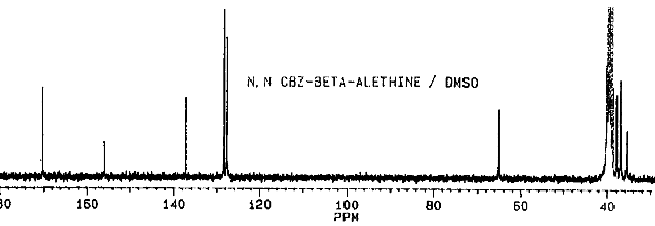
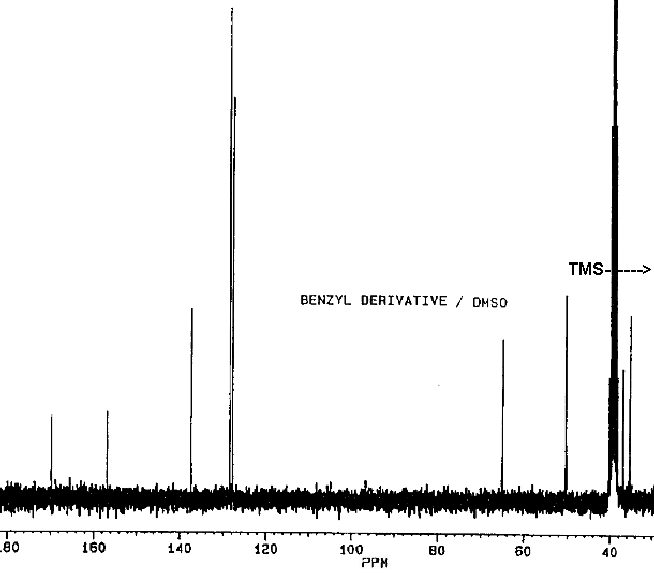
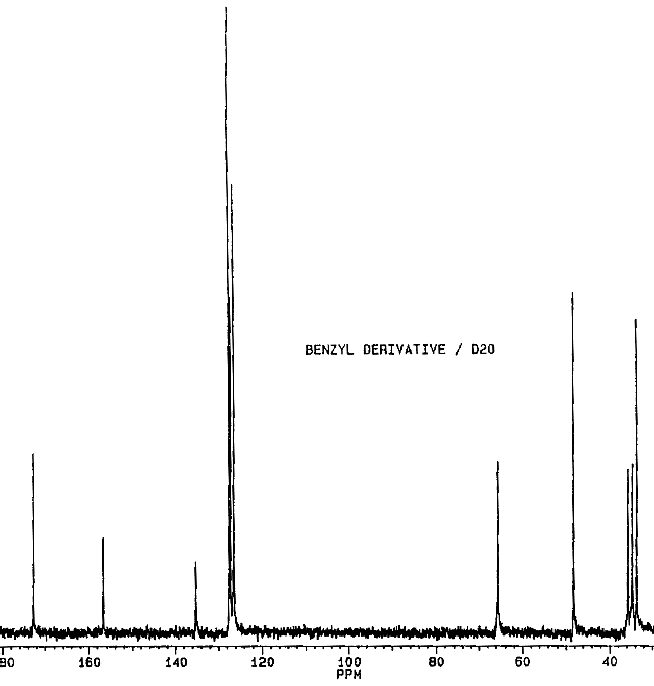
The absence of peaks in the 110 to 120 ppm range for these preparations
of the "benzyl derivative" and "vitaletheine V4" is consistent with dehydration
or loss of ZnO, respectively. Differences in some of the peak intensities
and in the relative positions of peaks between these preparations and the
authentic compounds, and even those differences noted for the
alleged
sulfonate preparations from modified procedures (probably sulfinates)
used by others, are quite small, but discernible upon careful inspection.



The slightest indication of an upfield shoulder on the peak at about
170 ppm in this "vitaletheine V4" preparation is not well represented after
processing into gif files. However, this may be another slight indication
that ZnO can be lost after exposure to dehyrating and hypobaric conditions.
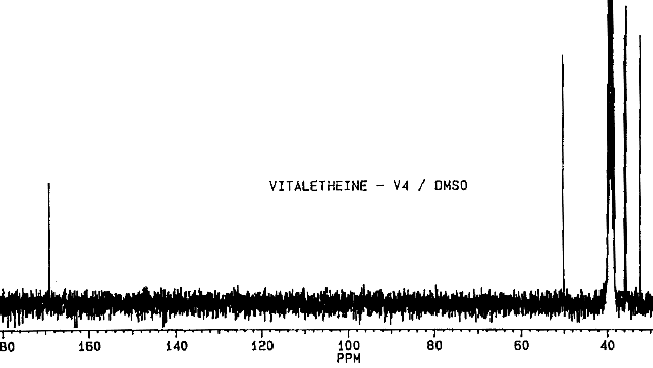
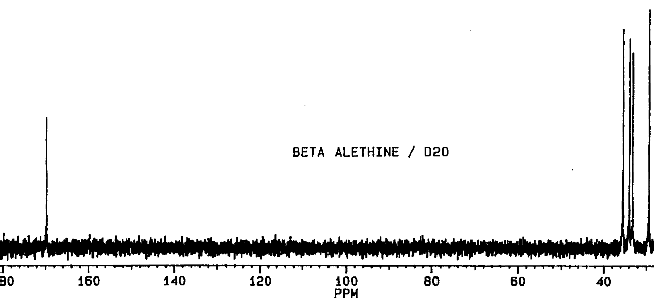
Differences between the spectra of ß-alethine and vitalethine are nearly indiscernible as an overlay of the former on the latter illustrates.
GO TO: /
| Home | Overview | People | Journal | Nutrition |
| Environment |
|
WWW Links | Outline | e-mail us |